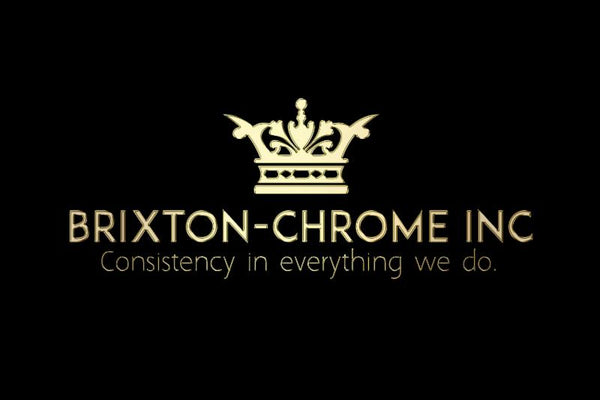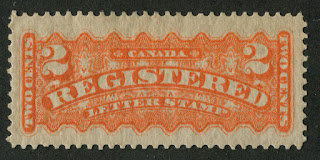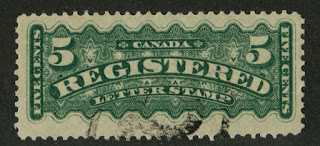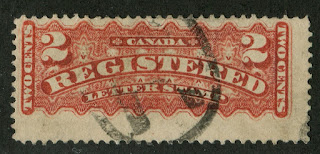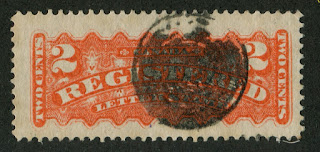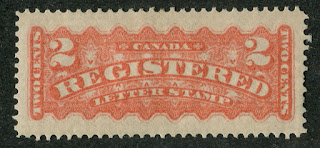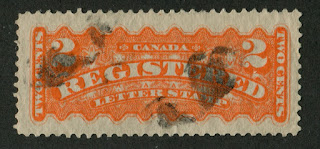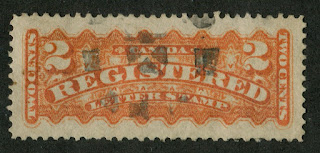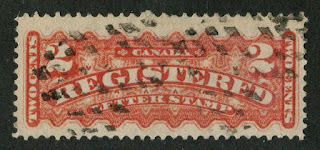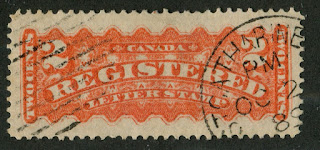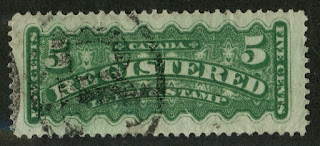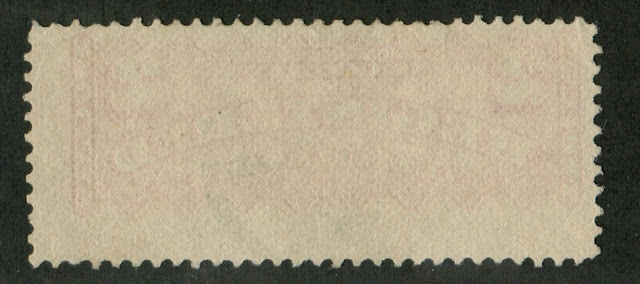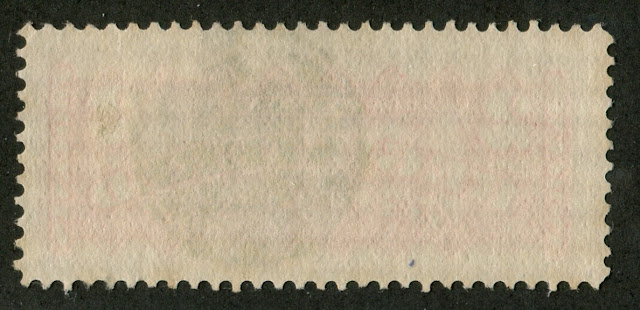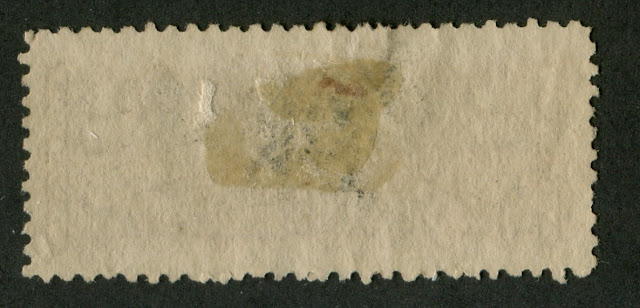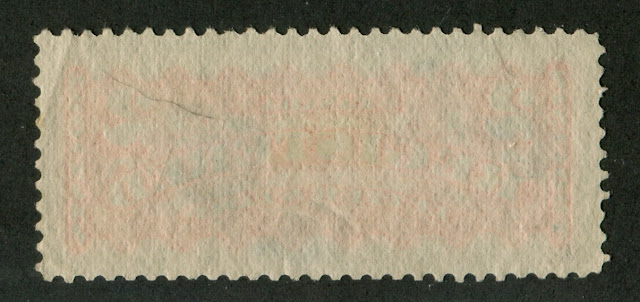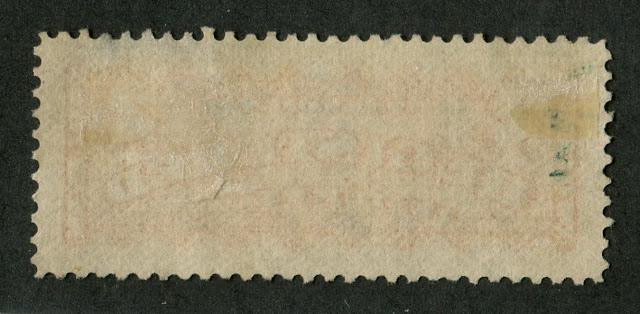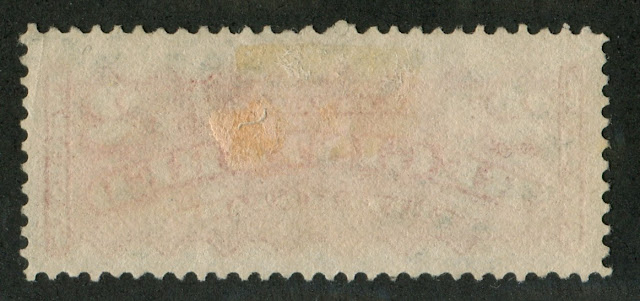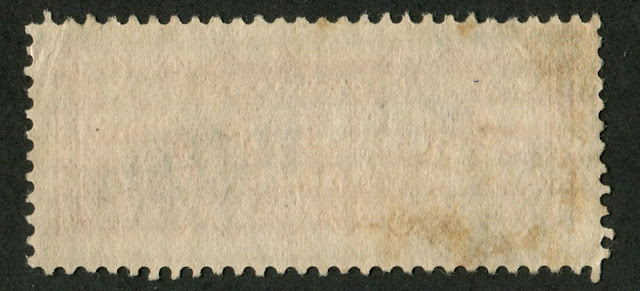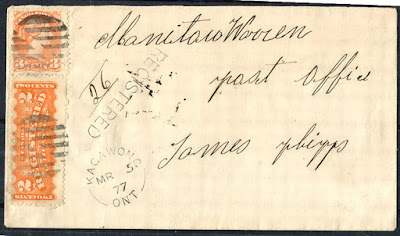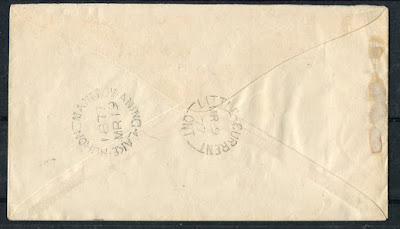In 1875 the post office department decided that it was desirable to have a separate series of stamps for the payment of registration fees. The stamps were not to be valid for postage - only for the payment of registration. Having a separate set of stamps made accounting for the revenue generated by registration services easier to determine. This may have been one of the reasons behind the issuance of these stamps.
There were three separate rates at this time for registration:
2 cents for local letters.
5 cents for US letters
8 cents for letters to the UK.
The 8c rate was very short lived, lasting only until the end of January 1, 1878, when the rate to the UK was decreased to 5 cents. In 1889, the domestic registration fee was increased from 2 cents to 5 cents. The postal regulations were relaxed somewhat, in order to use up stocks of the 2c, so that as long as a letter bore at least one 2c registered stamp, the remaining 3c could be paid with either regular stamps or a combination of registered stamps and postage stamps.
There were thus three stamps designed and printed by the British American Bank Note Company:
29,387,500 issued
12,367,500
125,000 issued in 2 printings.
I do not know who designed these stamps. But I am fairly sure that they would have been engraved by Henry Earle Sr. as it was he who engraved the Small Queens, which were in use at the same time as these stamps. They were printed in panes of 50, as I have seen full sheets offered for sale in recent years, though they are very rare. Indeed this is the subject of an amusing story involving myself, which I will get to later on.The points of interest with these stamps are much the same as the Small Queens, as the stamps were printed both in Montreal and Ottawa, and there is a wide variety of papers and shades. The appeal of this set is is ts manageability: the 2c and 5c values are cheap and plentiful in used condition so that a collector can have a lot of fun with them, while they seek out the better varieties. The wealthy collector can spend a very large sum on the rare multiples and postal history, not to mention the imperfs and proof material.
The main points of interest are:
1. The colour shades
2. The papers
3. Perforation varieties
4. Misplaced entries and re-entries
5. Imperforate and partially imperforate varieties.
6. Mis-perforated varieties and other freaks
7. Multiples and sheets
8. Postal history
9. Cancellations
10. Proof material and specimens
11. Gum variations
As always, I will discuss each of these in more detail.
Colour Shades
The 2c and the 5c stamp give the best variety of shades with the following easily identifiable:
2 cents:
Rose-carmine
Deep rose-carmine
Red-orange
Vermilion
Dull Vermilion
Orange
Dull orange
Bright orange
Deep vermilion
Some examples of the different shades are illustrated below:
Deep rose-carmine
Deep vermilion
Dull vermilion
Orange red
Dull orange
Rose-carmine
Vermilion
5 cents:
Dark green
Yellow green
Blue green
Green
Bluish green
Some examples of the 5c shades are as follows:
Bluish green
Dark green
8 cents:Bright blue
Dull blue
Examples of the two shades are thus shown:

Bright blue
Dull blue
Paper Varieties
The stamps of this issue are found on a very wide variety of papers, perhaps a greater variety than the Small Queens. There are horizontal and vertical wove papers that vary in quality from a medium stout wove paper with clear mesh, to a thin, paper that has little to no discernible mesh. Unlike the Small Queens, the poor quality newsprint-like paper that is often found on the second Ottawa printings is not often found on these stamps. Generally the paper varies in thickness from 0.0025" to 0.0035". On mint stamps, with the gum, it can
Some examples of the different papers that can be found are shown below:
Thin horizontal wove with barely discernible mesh from the second Ottawa printing
Medium white wove paper with vertical mesh. From the second Ottawa printings as well.
Stout vertical wove paper with no distinct mesh. This type is found on the early Montreal printings.
Thin, stout white wove paper with clear vertical mesh. From the late Montreal printings.
Medium soft horizontal wove. From the Montreal period.
Very thin horizontal wove paper from the second Ottawa period
Medium stout vertical wove paper from the late Montreal period
Perforation Varieties
Unitrade lists two perforations: 12 and 12 x 11.5, the latter only being found on the 2c and 5c. However, this a bit of a simplification, as the actual perforations varied from 11.75 to 12.3, while the vertical perforation varies from 11.9 to 12.3, with the 11.5 actually being 11.6. Stamps from horizontal perforation measuring 12.3 are only from plate 2, which first appears in 1886. The 8c is only found perforated 11.9 x 11.9, and 2c and 5c stamps with this perforation are thus Early Montreal printings from before 1878. In keeping with the Small Queens, the perf. 12 x 11.6 should be all but gone by 1880. From 1880 to about 1886, most stamps will be perforated 12. The 1888-1889 Montreal Gazette printings, which are the 2c in rose carmine and the 5c in yellow green will generally be 12.25 x 12 or 12 x 12.25.
Misplaced Entries, Plate Flaws and Re-Entries
Weak and incomplete framelines along the top and bottom of the design occur frequently on the stamps of this issue, and are not that special. However, there are major re-entries to be found on both the 2c and 5c, both of which are valuable. On the 2c, the doubling affects the right "2", the right "two cents", "Red"of "registered", "amp"of "stamp", "ana" of "Canada" and the left "two cents". On the 5c, the "N"of "Canada", the "S" of "Registered", the "ER" of letter show distinct doubling. There are many more re-entries than just these. Ralph Trimble's website lists and illustrates all of the better known ones. You can access that site via the following link:
http://re-entries.com/registered-twocents.html
Minor re-entries usually involve doubling or tripling of the left or right framelines.
On the 2c, two major plate flaws are the burr at the upper right corner and the burr to the right of the "T" of "Cents". These burr flaws consist of a protrusion of the orange colour into the white space of the outer framelines. There is also what is known as an "apostrophe" flaw, which consists of a similar burr located in the margin just above the "C" of Canada. The 5c can be found with the right outer frameline wholly or partially missing. In addition, this stamp can also be found with a misplaced entry, in which a portion of the value tablet can be found repeated inside the "F" of the left "five"
On the 8c you can find horizontal and vertical guidelines running through the letters of "Canada" and "Eight"
Imperforate and Part Perforate Varieties
The 2c cent is known imperforate, with only one vermilion pair being recorded. In addition to this, used singles with the bottom margin imperforate are known, as well as imperforate vertically. All of these varieties are rare. These stamps are known to exist with very large margins, so one has to be on their guard for singles that have been cut down to resemble imperforate stamps or partially imperforate varieties. Generally, as long as the imperforate margins are half or more of the width between subjects on the plate, you can be pretty confident that you have a genuine example. If the margins are very small all around, then chances of it being a trimmed example are quite high.
The 5c stamps from plate 1 can be found found imperforate in the top margin and entirely all the way around. Stamps from plate 2 can be found imperforate in the top margin or the bottom margin, but no pairs have ever been recorded. Plate 2 stamps can be distinguished from plate 1 by the spacing between stamps. Plate 2 stamps are 1mm futher apart in the horizontal direction and 1mm closer together in the vertical direction.
Mis-Perforated Varieties and Other Freaks
The 2c is known with double vertical perforations and double horizontal perforations. In the examples I have seen the extra vertical perforations appear on the left side and the extra horizontal perforations appear at the top.
Some of the stamps can also be found with perforations running at weird angles. Don Waters, a member of one of my Facebook groups sent me this scan of a used 5c stamp in his collection:

Pre-printing paper creases are found on these stamps. I have only seen them so far on the 5c, but I am sure they can also be found on the 2c and possibly the 8c. However, the low print quantity for the 8c may well mean that there are no such varieties for that value.
Multiples and Sheets
I have seen complete sheets of all three stamps. The Ron Brigham sale held recently, had a complete sheet of 50 of the 8c value. I viewed complete sheets of the 2c and 5c at a Robert A Lee Auction. Much to my horror and great embarrassment, one of the sheets of 50 became two blocks of 25 while I was examining them! Fortunately for me Robert had a very relaxed attitude. On seeing my facial expression, he said "Its okay. These are very fragile sheets. They were bound to do this sooner or later."
Plate blocks and pairs can be collected that show the very attractive value counters and plate inscriptions as shown below:
The plate inscription "British American Bank Note Company Montreal" appears in the side margins reading downwards between the 4th and 7th stamps down on each side of the sheet. It also appears in the horizontal margins between stamps 2 through 4.
The value counter appears in words right above the first stamp, and on the other side of the sheet just above the 5th horizontal stamp, there is a numeral for the value.
Occasionally, one can also find the guillotine guide lines in the top margins, as well as the pane markings "A" in the top margin, or "B" in the bottom margin.
Postal History
A wide variety of covers can be collected for this issue. There are several factors that contribute the the interest level of postal history from this set. One of them is the changes in regulations that allowed for the use of mixed frankings to pay the registration fees. An interesting project would be trying to collect all the different possible combinations that can be found between 1889 and 1893 when the registration rates changed, as well as before. The 8c value properly used on cover to pay the registration fee to the UK is a great rarity and can fetch upwards of $20,000. The cover below was sold by Robert A Siegel in May 2014 for $17,500 US before buyer's premium.
Because registered mail contained important documents, usually of a commercial nature, it is possible to collect some very historically significant covers. The key is to pay attention to the dates, the names of the addressees and the cancellations. The cover below was sent entirely within Manitoulin Island in 1877 and took 2 weeks to travel under 100km!
Manitoulin Island is an island located in Lake Huron (in Ontario). It is roughly 1,000 square miles and was not opened for non-native settlement until 1862. It had a population of around 12,000 in 2012.
The following illustration shows the types of covers that can be found for this issue:
Cancellations
A wide variety of cancels can be found on these stamps including:
1. The registration number of the letter in pen.
2. Straight line "Registered"
3. Various fancy corks.
4. Heavy black "R" in black oval.
5. CDS town cancels.
6. Split ring town cancels
7. Target and bulls eye cancels
8. Various barred grids
9. All the above in colour
4. Heavy black "R" in black oval.
5. CDS town cancels.
6. Split ring town cancels
7. Target and bulls eye cancels
8. Various barred grids
9. All the above in colour
Proof Material and Specimens
Die proofs exist of all the stamps in the issued colours, and various others, though they are so rare that I do not know what colours exist. A search in Google did not turn up anything sold in recent years.
Plate proofs of the stamps exist printed on India paper and mounted to card. These too are very rare.
Some stamps were also overprinted "specimen" for distribution to member countries of the Universal Postal Union. I have only ever seen examples of the 2c and 5c, overprinted in small, sans-serif letters. These must also be very rare, as specimens usually are, since there are generally only as many produced as member nations.
Gum Variations
The gum on the early Montreal printings is dull and appears streaky and unevenly applied as if by brush. Inexperienced collectors can mistake these for no gum or regummed stamps. They are not though. In fact the 8c value only comes with this type of gum when original, as it was only issued in 1876-1877. So if you find examples with shiny, thick or yellow gum, they are not original gum.
Later Montreal and Ottawa Printings have a variety of thicker, shiner gums, most of which are yellow to brownish yellow. It would be interesting to do a study of the gum types correlated to the papers and shades on mint stamps, with the shades tied into a study of dated used examples. This would allow approximate years to be assigned to the various gum types, and this could further aid the study of the Small Queen issue.
Many examples of this issue are found without gum. I'm not sure why this is, but it is important to watch for regummed stamps. These can be identified by having the wrong type of gum (i.e. colourless and shiny), or by the presence of gum on the very fine microfibres of the perforation tips, where there should not be any gum.
Hopefully, this post gives you a good idea of the potential that exists for this very beautiful issue of classic stamps.
The gum on the early Montreal printings is dull and appears streaky and unevenly applied as if by brush. Inexperienced collectors can mistake these for no gum or regummed stamps. They are not though. In fact the 8c value only comes with this type of gum when original, as it was only issued in 1876-1877. So if you find examples with shiny, thick or yellow gum, they are not original gum.
Later Montreal and Ottawa Printings have a variety of thicker, shiner gums, most of which are yellow to brownish yellow. It would be interesting to do a study of the gum types correlated to the papers and shades on mint stamps, with the shades tied into a study of dated used examples. This would allow approximate years to be assigned to the various gum types, and this could further aid the study of the Small Queen issue.
Many examples of this issue are found without gum. I'm not sure why this is, but it is important to watch for regummed stamps. These can be identified by having the wrong type of gum (i.e. colourless and shiny), or by the presence of gum on the very fine microfibres of the perforation tips, where there should not be any gum.
Hopefully, this post gives you a good idea of the potential that exists for this very beautiful issue of classic stamps.
